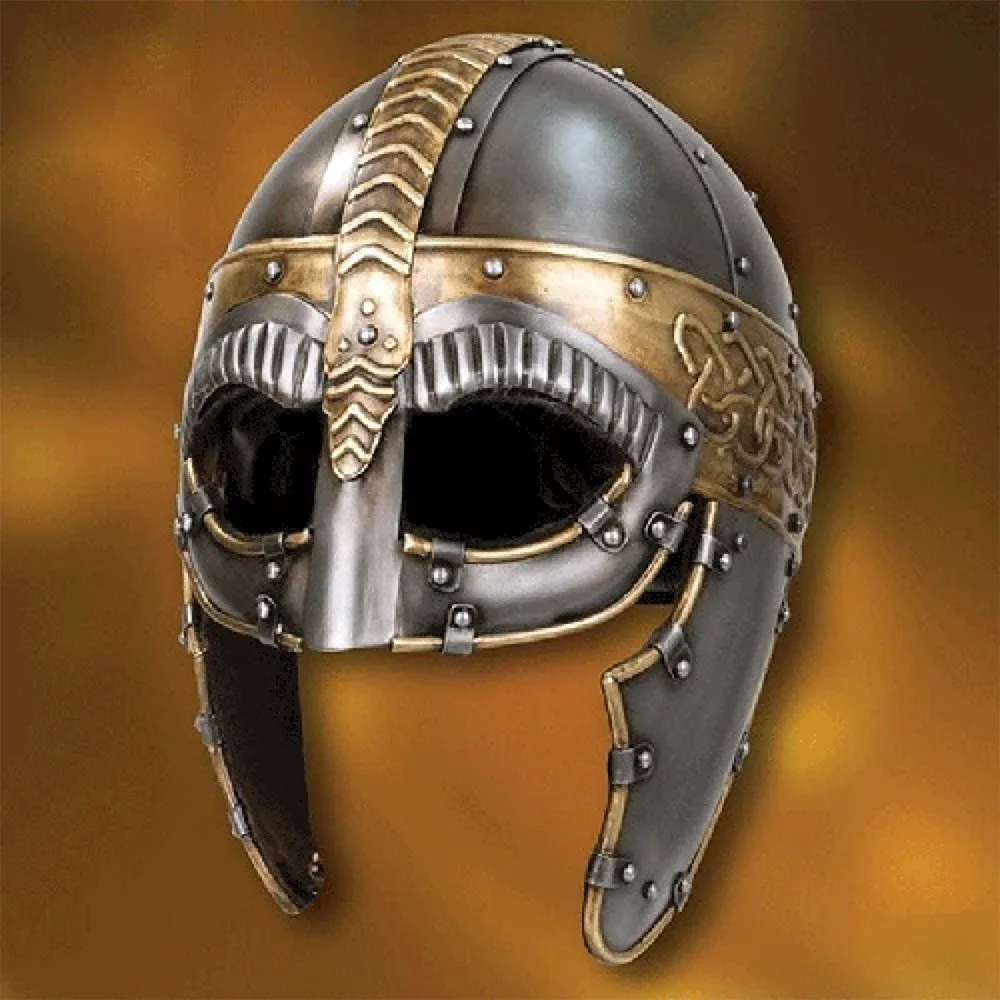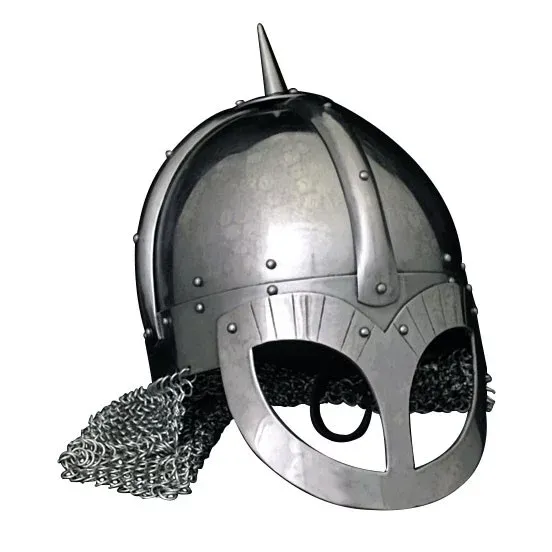What is a Gjermundbu Helmet?
The Gjermundbu helmet is one of the most emblematic pieces of Viking archaeology and offers a fascinating glimpse into military tactics and culture at the end of the 9th century. This impressive defensive helmet, classified within the type known as "spectacle helmets," has captured the attention of historians and archaeologists due to its unique design and historical importance. Below, we will explore its features, history, and significance in detail.
Features of the Gjermundbu Helmet
The Gjermundbu helmet is a remarkable example of Viking metallurgical skill. Here are its most notable features:
- Origin and Era: Although its roots are found in the Vendel Era, the helmet was mainly used during the Viking Age, around the year 875. This period is known for the frequent conflicts and territorial expansion of the Vikings.
- Design: The helmet is made of iron and consists of three main plates that form a semi-spherical structure. These plates are joined by riveted metal, ensuring its solidity. The design includes a distinctive spectacle-shaped face guard that is both functional and indicative of the style.
- Face Guard: The front of the helmet features a metal visor that protected the face of the wearer, an essential feature of "spectacle helmets." This element would have provided crucial defense in close combat.
- Connection with Neck Guard: At the base of the helmet, there are holes that were likely used to connect the helmet with a neck guard. This accessory, similar to a chainmail, provided additional protection to the user.

Discovery and Historical Context
- Discovery: The helmet was unearthed on March 30, 1943, by Lars Gjermundbu, in Ringerike, Norway. It was found in fragments within a burial mound, suggesting Viking funerary customs.
- Funerary Context: The objects recovered from the grave indicate that they belonged to a person of high status, such as a noble or monarch from the kingdom of Ringerike. Among these items were swords, spears, axes, and equestrian equipment, typical accessories of a high-ranking warrior.

Historical Significance
- Importance: Notably, the Gjermundbu helmet represents the only completely intact example of a Viking helmet discovered to date. This fact emphasizes its uniqueness and advanced craftsmanship.
- Reserved for Royalty: It is believed that only individuals close to royalty or leaders of the hird, the king's personal retinue, wore helmets of this type. This suggests that such equipment was a symbol of prestige and power in Viking society.
Conservation and Exhibition
- Currently: The Gjermundbu helmet is on display at the Historical Cultural Museum of Oslo. It is considered one of the museum's gems, attracting visitors interested in the Viking Age and its legacy.
The Gjermundbu helmet is not only a highly valuable archaeological finding but also a window into the world of Viking warfare and its social hierarchies. It reflects not only mastery in metalworking but also the deep symbolism of these weapons and armors for the Vikings of the medieval era.
















